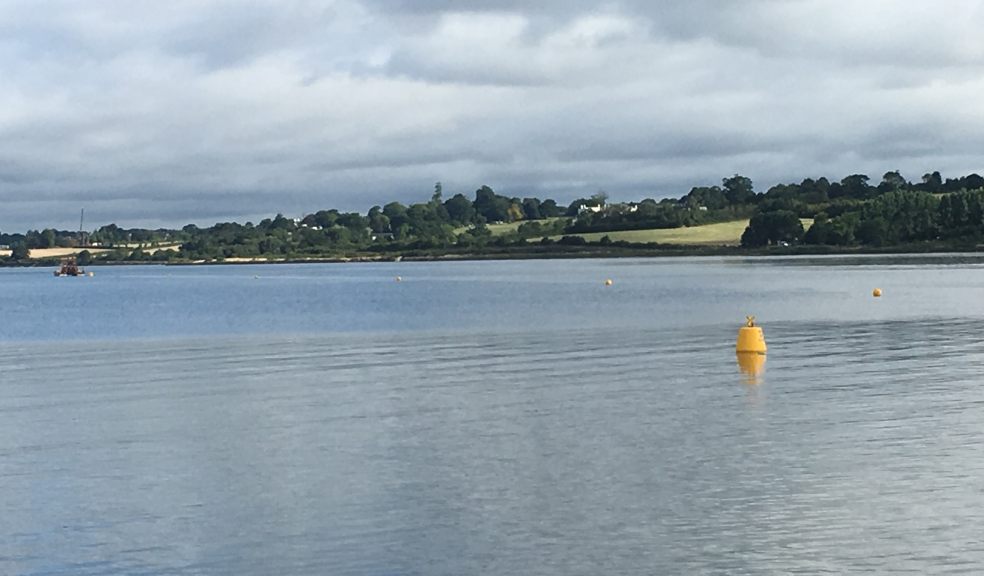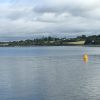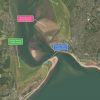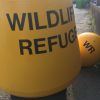
New areas of the Exe Estuary protected for wildlife
Two new areas to protect wildlife on the Exe Estuary are being put in place this week.
Known as wildlife refuges, the areas are marked out with yellow ‘special mark’ buoys which have “WR” in black letters printed on them. People are being asked to avoid the areas, all year round at Dawlish Warren National Nature Reserve (NNR) and between15 September to 31 December at Exmouth Local Nature Reserve (LNR).
At Exmouth LNR, the wildlife refuge protects important feeding areas during low season for a short period of time. The Imperial Recreation Ground slipway can still be used to access the foreshore during this time, although dog walkers are being asked to turn left at the end of the slipway, to avoid the refuge.
At Dawlish Warren NNR, the wildlife refuge protects important wildlife feeding and resting areas all year round. Both refuges will be monitored to understand the effects on wildlife.
These key areas for wildlife were approved by the partnership of three councils surrounding the estuary, known as the South East Devon Habitat Regulations Executive Committee (SEDHREC) in October 2017.
Chair of the South East Devon Habitat Regulations Executive Committee (SEDHREC), and Teignbridge District Council’s Executive Member for Planning and Housing, Cllr Humphrey Clemens said: “The refuges are needed because as our population grows, more people are visiting the Exe Estuary to enjoy all it has to offer. We need to balance these competing demands to preserve this beautiful place for generations to come and fulfil our legal obligations.
“The Exe Estuary is key to the survival of wintering waders and wildfowl. Recognised internationally for its conservation role, this Special Protection Area (SPA) and Site of Special Scientific Interest (SSSI) is also a Ramsar site - a global designation putting it in the same league as the Okavango Delta in Botswana and the Florida Everglades.
“The mild climate and the vast food sources of the Exe mudflats attract tens of thousands of wetland birds, including Avocet, Curlew, Godwit, Dunlin and Brent Geese. On their long migratory journeys from as far away as arctic Siberia, these birds face many challenges and are exhausted when they arrive. Please help us protect them by avoiding the wildlife refuges, as the birds may not survive if they are regularly disturbed.”
Stephanie Clark, Exe Estuary Management Partnership, said: “These wildlife refuges are a good approach to ensure that recreational activities can continue on the Exe in harmony with the important wildlife. The safety of people on the estuary is a top priority and we advise visitors to take all necessary safety precautions. On the water, to keep safe you may have to temporarily enter a wildlife refuge, but as soon as it’s safe to do so, please make your way out again.
“All visitors should read the new codes of conduct, created to help the wide range of different users respect the wildlife and other visitors. They are available at www.exe-estuary.org and www.southeastdevonwildlife.org.uk. Printed copies are also available through local clubs, businesses and Tourist Information Centres.”
Amelia Davies, Habitat Mitigation Officer for SEDHREC, advised: “We’ve been working hard to help people understand this special place for wildlife. We are installing new interpretation boards around the estuary, which inform people about the protected species on site.
“We’ve been meeting with different groups around the estuary, as we carry out a programme of education to help visitors and locals alike understand where the refuges are and why they are needed. We’re always pleased to meet people and we’re regularly out and about, so please come and say hello.
“There are no plans to enforce the refuges, so you will not be fined if you find yourself inside the areas, although we are asking people to avoid them.”















